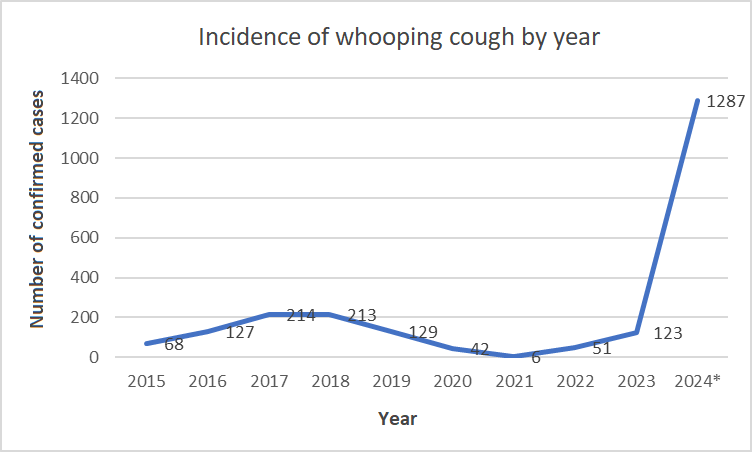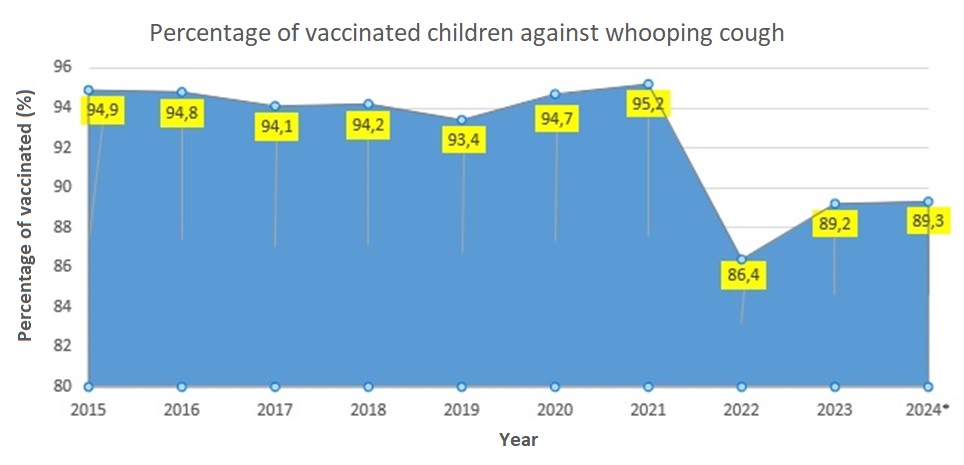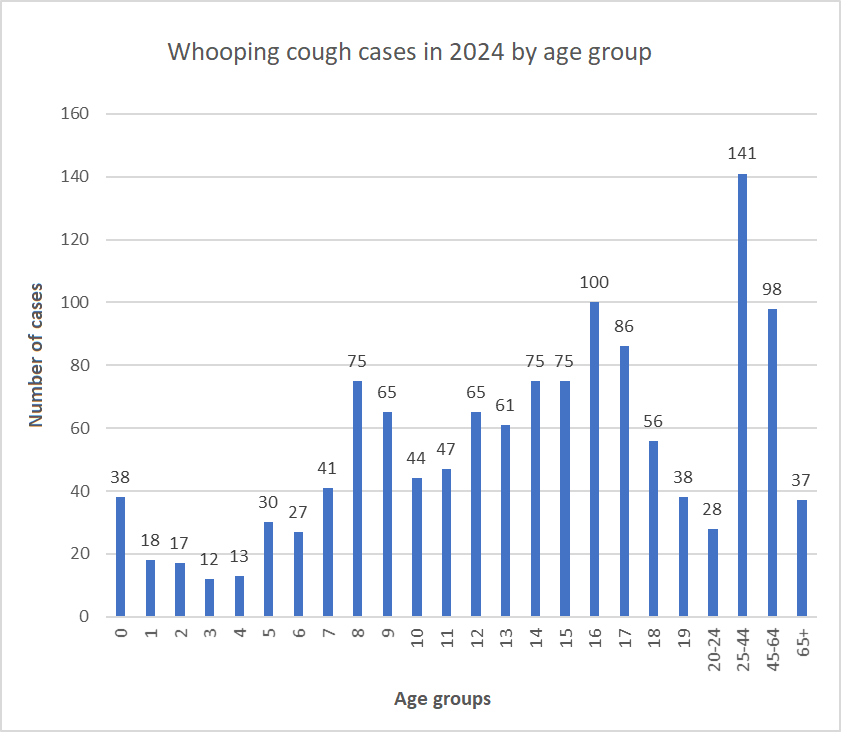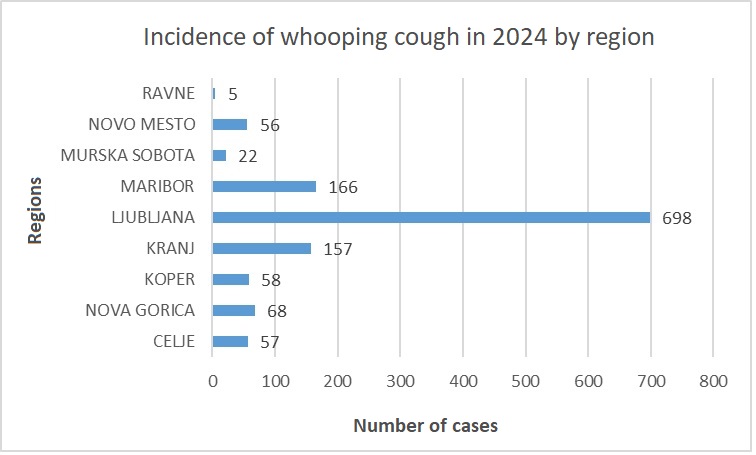Maintaining a high vaccination rate among children and adolescents is crucial for controlling whooping cough and, in particular, for protecting vulnerable groups. Vaccination is highly recommended (and free of charge) for pregnant women to protect their babies in the first months of life.
Whooping cough is a respiratory disease caused by the bacterium Bordetella pertussis. People who get whooping cough can experience episodes of coughing that last for 4–8 weeks. The disease poses the greatest risk to infants and young children.
While in the last 10 years in Slovenia, there has been only one year with more than 200 confirmed cases of whooping cough, this year there have already been 1,287 confirmed cases of whooping cough.

* until 20 May 2024.
Such an outbreak is driven by several factors. “Immune debt is increasingly coming to the forefront. The COVID-19 pandemic and restrictive measures such as reduced social interaction and isolation have prevented the circulation of various infectious disease agents that normally stimulate our immune system to produce protective antibodies. Additionally, pertussis vaccination does not provide lifelong protection, and immunity against the disease begins to wane after a few years. Furthermore, the bacterium causing whooping cough itself has started to change. The sequence or cumulative effect of all these events results in a higher incidence of this disease,” explains epidemiologist Prim. Assoc. Prof. Alenka Trop Skaza, PhD, MD, who heads the regional unit of the National Institute of Public Health (NIJZ) in Celje. Moreover, according to Prim. Assoc. Prof. Trop Skaza, PhD, MD who specializes in infectious diseases, whooping cough cyclically appears in outbreaks, much like other infectious diseases, typically recurring every three to five years.

* preliminary data
Whooping cough vaccination is free of charge (covered by compulsory health insurance) for infants, children and adolescents in primary and secondary schools – it is compulsory for them. Additionally, for several years now, it has been recommended in Slovenia to vaccinate pregnant women against whooping cough as soon as possible after the 24th week of pregnancy.
Vaccinating pregnant women provides protection to the infant during the first months of life when they are most vulnerable
“Pregnancy itself, as a physiological condition of the expectant mother, does not inherently pose an increased risk for severe whooping cough. It is true that a pregnant woman can contract the same form of whooping cough as a non-pregnant woman of similar age. However, intense coughing during pregnancy can trigger preterm labour,” explains Prim. Assoc. Prof. Alenka Trop Skaza, PhD, MD.
In the last two years, around 1,000 pregnant women in Slovenia have been vaccinated against whooping cough. This is a relatively small proportion considering that between 16,000 and 17,000 women in Slovenia are pregnant each year. This year, however, almost 1.000 pregnant women have been vaccinated against pertussis in Slovenia, one third of them at NIJZ vaccination clinics.
“We recommend vaccination of pregnant women against whooping cough for several reasons. During pregnancy, a woman develops specific protection against whooping cough, and this protection, in the form of antibodies, passes through the placenta into the unborn child’s bloodstream. When the baby is born, they will have very good protection due to these so-called maternal antibodies, if they come into contact with the bacteria during those most vulnerable weeks and months when they cannot yet be vaccinated against whooping cough – specifically, if they are younger than three months. The maternal antibodies will protect them from this infection,” adds Prim. Assoc. Prof. Alenka Trop Skaza, PhD, MD.
“The child also receives protection through breast milk, which contains antibodies. When the baby spits up after breastfeeding, this contributes to local protection of the child’s mucous membranes. This is particularly important for premature infants, who are especially vulnerable to whooping cough. ‘Maternal antibodies passed to the child through breastfeeding can also transfer into the child’s bloodstream through the digestive system.’ Therefore, women who choose to get vaccinated against whooping cough during pregnancy are protecting their child’s health. As explained by epidemiologist Prim. Assoc. Prof. Trop Skaza, PhD, MD, clinics are observing an increasing awareness of the importance of vaccinating pregnant women, and there are cases where not only pregnant women but also their partners and family members are vaccinated against whooping cough. This additional vaccination of family members further protects the baby.”
Nearly 1,000 confirmed cases among children and young people up to 20 years of age
Out of the 1,287 confirmed cases of whooping cough this year, 983 cases were confirmed in children and adolescents aged up to 20 years. Whooping cough can still be a cause of death in infants younger than 6 months. So far this year, 38 cases of whooping cough have been confirmed in children under one year of age.

Most cases of whooping cough were confirmed in the Ljubljana region this year.





